Tattoos have never been more popular than today. As a birthday present, to celebrate the end of university or to seal an eternal friendship. There are many opportunities to get your first tattoo. And getting tattooed after important life events was the real meaning of Maori tattoos. This art comes from Tahiti and survives in New Zealand, and has a wide range of patterns with a strong symbolic dimension.
History of Polynesian Tattoos
When we talk about Maori tattoos, we tend to refer to tattoos worn by impressive rugby players in New Zealand. The Maori are part of Polynesian civilization. Originally from Southeast Asia, these populations are now located in the Marquesas Islands, Samoa, the Cook Islands, Hawaii, Tahiti and New Zealand.
Mata Mata Arahu and Tu Ra'i Po '
Tahiti is the most important island in French Polynesia. The first type of tattoo came from this island. Historically, Polynesia did not have a writing system. The tattoo was a way to present personality, social rank and genealogy. It was also evidence of sexual maturity. Therefore, this power symbol protects the wearer from the loss of What , the Polynesian source of energy found in everything.
Tattoos originate from Polynesia's origins, in a dark period called Po '. Ta'aroa, the great god of Tahiti, had two sons:Mata Mata Arahu and Tu Ra'i Po '. They were both attracted to mankind's first daughter, Hina Ere Ere Manua. To preserve her honor, her mother made her live again. To seduce her, the two brothers invented " TATAU "And trimmed himself with Tao Maro pattern. Hina Ere Ere Manua fled with the brothers and became the first tattooed woman. Mata Mata Arahu and Tu Ra'i Po 'became the tattoo gods and taught the men this art.
Tattoo art improved to the point of perfection in Tahiti. Missionaries banned the practice in the 18th century. It survived in the Marquesas Islands, the Cook Islands and New Zealand.
The Legend of Mataora and Tā Moko
Mataora was a young warrior who fell in love with Niwareka, a princess who lived in the underworld of Rarohenga. She climbed to the upper world, where she met and married Mataora. But one day he became jealous and beat her. Then Niwareka fled back to his father, Uetonga, in Rarohenga. Broken hearted, Mataora decided to pick her up. When he arrived in the Uetonga Empire, he noticed that his journey made the drawings on his face disappear. Niwareka's family made fun of him for that. He asked his wife to forgive him, and she accepted.
Then he met Uetonga, who tattooed someone's face. He deleted Mataora's face drawings to show him that real tattoos are permanent. But it provoked more ridicule from Niwareka's family. Mataora accused Uetonga of ruining his tattoo, drawing all the underworld patterns on his face. Uetonga then tattooed him using a sharp tool to pierce his skin. Mataora discovered the pain of tattoos and Uetonga taught him the art of Tā Moko (the Māori tattoo technique). When Mataora mastered this art, he returned to his world with Niwareka.
I 19 th century, Moko became very popular during the New Zealand Wars of 1845. It was referred to as "the art of the devil". First because of Matoraa's legend, and because it made the wearer's faces look scarier.
Moko was Māoris' identity card, which showed their social ranking and the history of their family. Although Moko was traditionally on the face, it could be tattooed on the buttocks, thighs, back, abdomen and legs for men. Women could also get a Moko. It was limited to their chin and their lips. But other parts of the body known to have Moko for women are the forehead, buttocks, thighs, neck and back.
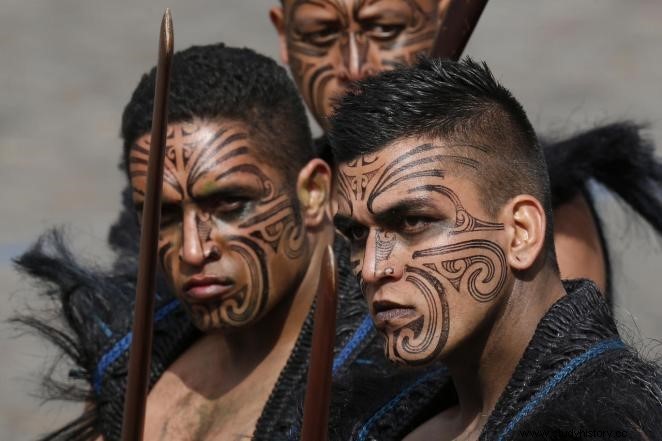
Tattoos Symbols
Tahitian symbols
Tiki
Tiki is a Maori symbol that represents a demigod, a half human. Common to all Polynesian cultures, it is a lucky charm against evil spirits and symbolizes power and masculinity.
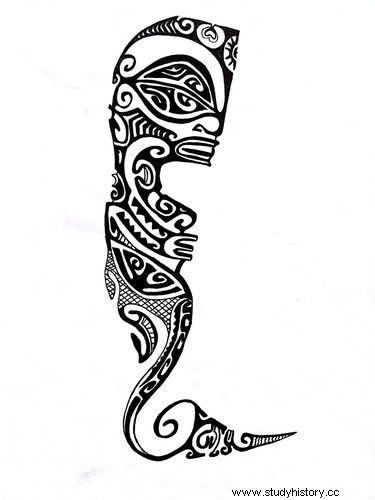
Shells
Shells, in Tahitian culture, are precious, especially the turtle's shell. They are symbols of protection, well-being and peace, but also of intimacy, fertility and femininity.
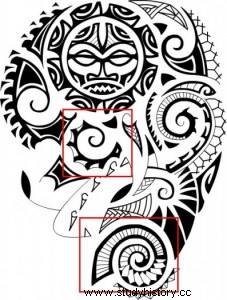
The Turtle
The most important animal in Tahitian culture. The tortoise represents wisdom, as it can live more than a hundred years. Locals believe that the sea is the way to another life, where the soul goes after death. And turtles are the only independent creatures that can cross this path, between land and sea. Therefore, they are seen as spiritual guides.
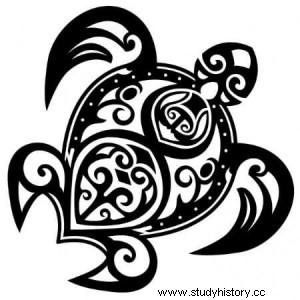
The Sun
Most of the time, the sun, associated with other patterns, emphasizes a sense of grandeur. It is a symbol of wealth, splendor, leadership and revival, rising every day.
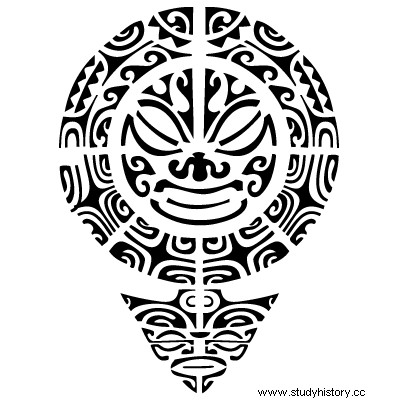
The sea
Polynesian peoples have a very close relationship with the sea. It represents the land where the ancestors live. Both representing death and life, the sea is a complement to another pattern, such as the sun. It represents hardness.
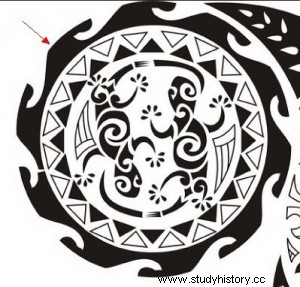
Shark teeth
The sea and its inhabitants are recurring in Tahitian tattoos. And shark teeth have an important place in this art. Named niho mao in Tahitian they represent adaptability, shelter, security and violence. The design looks like triangles and can be changed depending on the tattoo style.
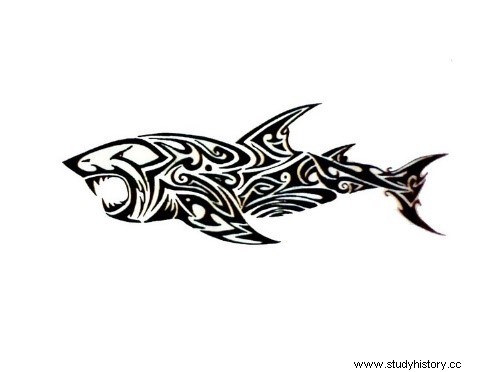
Geckoen
Although sweet for some and scary for others, gecko is an endemic lizard of Polynesian islands and also ... a representation of gods. Like the turtle, the gecko is an animal that lives between land and sea for a very long time. This little guy is a symbol of luck and protection.
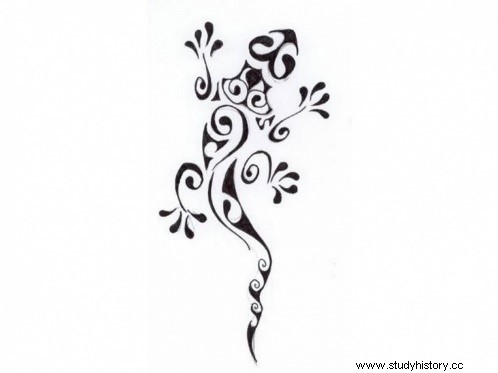
Enata
Enata is a frequent pattern in the Marquesas Islands. It represents people and gods and is a symbol of energy. Depending on the wearer's life experience and combination with other symbols, its meaning changes. Enata illustrates moments of life, such as births and marriages. An inverted Enata represents an enemy.
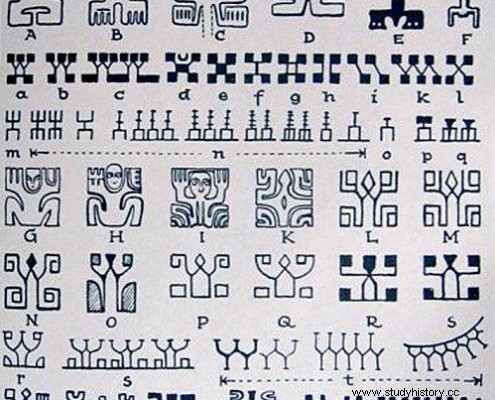
Manta Ray
Most of the time, lovers of Polynesia choose this animal as a tattoo for its beauty. In Tahitian culture, it symbolizes freedom, mild strength and wisdom.
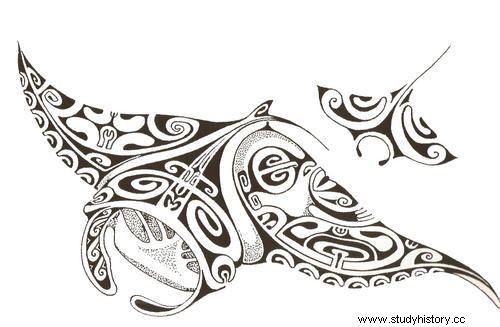
Maori symbols
To tell the story they are going to tell, Maori patterns can be simple or combined.
The Pakati
Typical of male tattoos, it symbolizes bravery and strength in warriors.
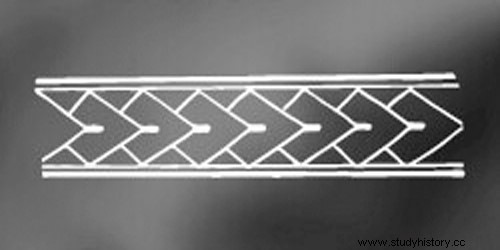
The Hikuaua
This pattern comes from the Taranaki area of New Zealand, known for its prosperity
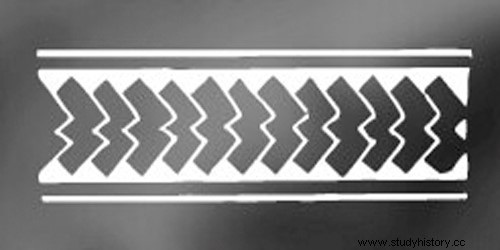
The Unaunahi
These fish scales represent health and abundance
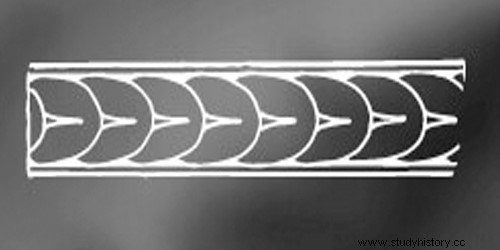
The Ahu Ahu Mataroa
This is the symbol of an achievement, or sometimes, a new challenge
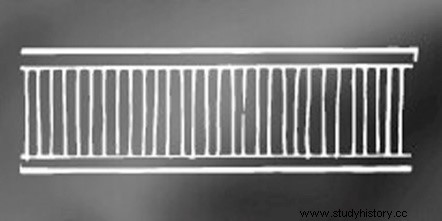
The manaia
The manaia is a spiritual guardian. It has the head of a bird, a human body and a fishtail. He protects the heavens, the earth and the sea.
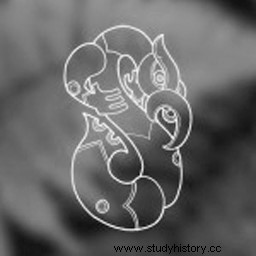
De lund
This spiral symbolizes beginnings, and is the most symbolic design in Maori tattoos.
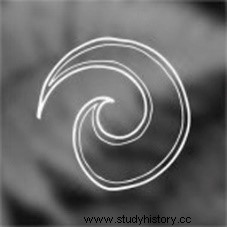
The Hei Matau (Fishing hook)
Fish is Maori's most traditional food, and the hook symbolizes the strength of the Maori people. therefore Hi Matau pattern is another symbol of prosperity.
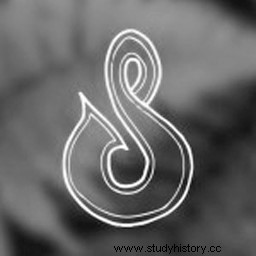
Single Twist
It represents the path of life. Like the symbol we know as Western, it is the symbol of eternity
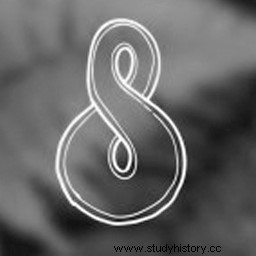
Double or triple twist
This pattern is a favorite in Maori symbols. These twists represent the union of two people or two cultures for eternity. People who get this tattoo will experience the ups and downs of life together.
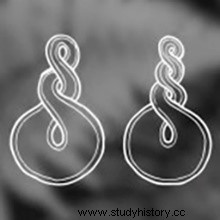
The picorua
This tattoo has the sea and the earth and is an illustration of life.

De Nga Hau E Wha
This combined pattern shows the four corners of the earth and the four winds. It is a message to respect the gods and their actions.
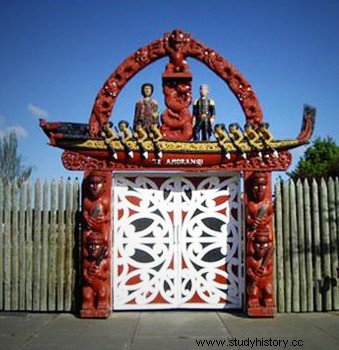
The Timatanga
This pattern represents parents and children together until their paths separate.
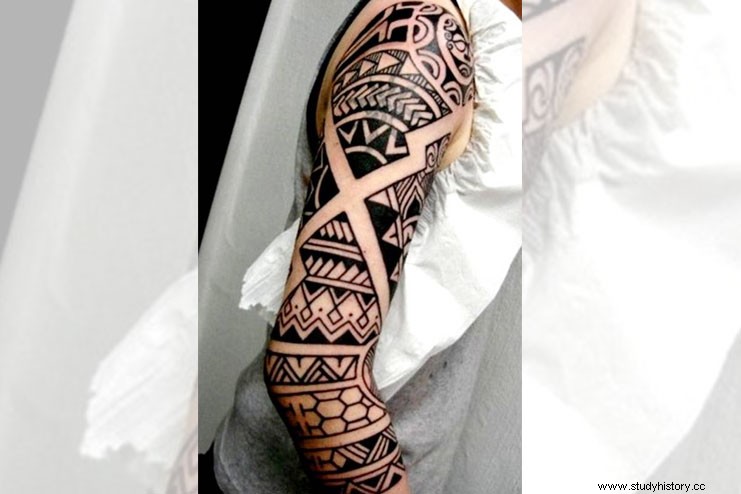
Tattoo process
The Tahitian Ritual
The very name "tattoo" comes from the term " TATAU ", which means" to strike ". When an initiate appeared in trials, he could get new tattoos and gain more prestige. For women, tattoos were more seen as jewelry. Therefore, the execution of the tattoo was more precise, and the design more elegant. There are four types of tattoos in Tahiti:those reserved for gods, priests and kings, those reserved for chiefs, those reserved for great warriors, dancers and rowers and those for people without significant ancestry.
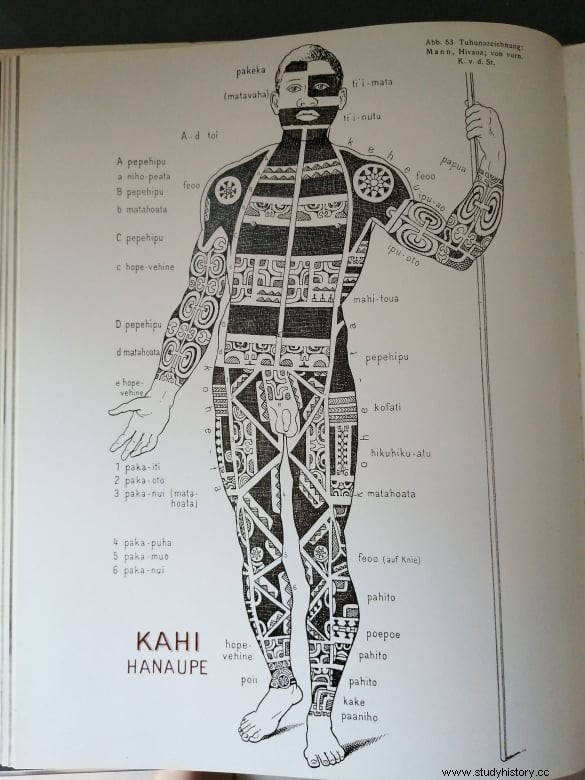
Boys can get their first tattoo at the age of 12. When they reach puberty, the tattoo will make them look more attractive. For girls, the first tattoo can be an 8-year gift. It was a way to show that they had reached puberty.
Since the tattoo included rituals, pre-process ceremonies were frequent. While the priest did the tattoo, women and men danced, played music and blew in the conch for support. This feature gave the tattoo the name of Tahu'a Tatau . He could sing to the rhythm of the stick he used to tattoo the young man. The Tahu'a Tatau had two instruments to make the tattoos:a bradawl (to pierce the skin) and a stick. Bradawl contained 36 shark teeth. It entered the skin thanks to the stick, which acted as a hammer. Crushed and burnt The nuts and monoi of the Kekuna tree were the ingredients of the ink ( Tia iri ).
A man covered in tattoos had the greatest prestige. His many tattoos meant that this man had many virtues. When someone dies, the gods will judge him through his tattoos.
Māori Tattoo Pain
For the Māori tattoo, the process can be complex as it includes a code. The face was divided into eight areas, for each important moment in a person's story. For example, the forehead shows the person's ranking. Under the nose, the tattoo was the signature of the person. Chin was for this person's prestige and his jaws showed his birth status. In addition to being complex, the Māori tattoo is extremely painful and dangerous. The uhi was the main tool for Maori tattoos. These sharp scissors, made of bird bones, were used to cut the skin. Then inks made from dried plants and oil will fill the cuts.
With the arrival of the Europeans, gunpowder was added to the tattoos' ink to accentuate the patterns, and later it would be replaced by Indian ink. In the 19 th century, Māori replaced these traditional tools with metallic ones. It gave the Māori tattoo more recognition. Because of the pain the tattooing process could represent, this recognition was important. A man who received a Moko in the face could not eat anything during the healing process, which could last several days, sometimes weeks. He could only drink fluids given to him through a wooden funnel.
Granting of Western tattoos
In 1771, Captain James Cook was the first explorer to discover the Polynesian islands. He was the first to introduce tattoos in Europe.
Today, Polynesian tattoos have never been more popular. Celebrities like Robbie Williams, All Blacks rugby players or Dwayne The Rock Johnson proudly display their tribal tattoos. The young Polynesians want to restore the connection to their traditional values. This is why they insist on getting tattooed with traditional tools. Today, for these young people, tattoos are a real sign of regained identity. If you are non-Polynesian and planning to get The Rocks tattoo on your arm, you should think twice. Copying a Māori tattoo is a great insult.
For example, Robbie Williams' tattoo was controversial as he does not have a Maori genealogy (instead of Dwayne Johnson, who is Samoan-American). As a result, Te Uhi has a Mataora group created the term kirituhi , which means "drawn leather", for a pattern that can be used by anyone for one reason or another.
Maori and Polynesian tattoos today
In 1986, tattoos, through traditional practice, were banned in Tahiti. The tools, made of wood and bone, were non-sanitary and getting infections could be frequent. But today, the Polynesian tattoo has become more popular in recent decades. Younger generations in the Polynesian triangle and around the world tend to pay attention to their origins. Therefore, one of the best ways to show this original pride is to get a tribal tattoo.
Some young people of Polynesian culture tend to regain this identity with a tattoo that will tell their personal story. Their enthusiasm is such that the practice of tattooing with traditional tools has a strong revival as well.
Respect for this traditional practice grows with the recent awareness of the legitimacy of primary civilizations. Today, people tend to discover the true meaning and symbolism of Polynesian tattoos. It is well known today that a non-Polynesian person who gets a Maori tattoo can be disrespectful. Hopefully, indigenous communities will try to find a common ground to make the tradition accessible to as many people as possible.
